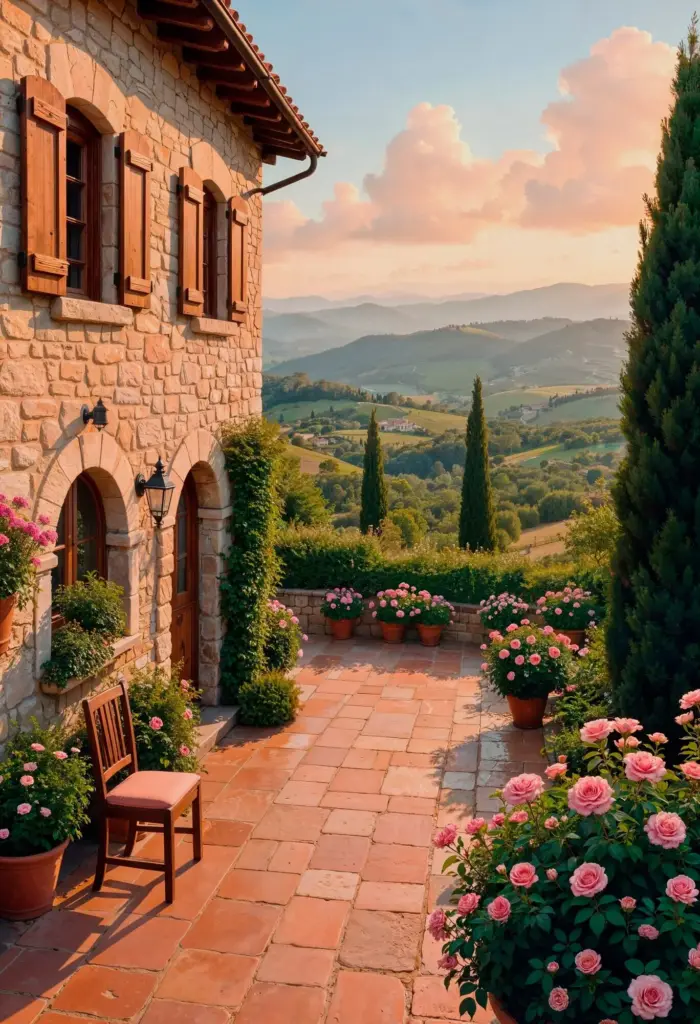Edible Yards That Look Like Art and Feed You
Today we dive into edible yard layouts that blend beauty with food production, celebrating landscapes where roses companion basil, trellises glow with beans, and paths invite harvests as much as admiration. Expect practical design moves, heartfelt stories, and clear steps that turn everyday spaces into nourishing, photogenic sanctuaries. We’ll explore plant pairings, seasonal choreography, and gentle maintenance rhythms, all crafted to help you harvest abundance without sacrificing curb appeal. Bring your questions, share your photos, and let’s grow something deliciously beautiful together.
Start With Place: Light, Soil, Water, Flow
Before drawing curves or choosing varieties, read the site like a living manuscript. Track where morning light lingers, how afternoon heat concentrates, and where rain slows or rushes. Noting hose reach, kitchen proximity, and daily foot traffic prevents inconvenient layouts. Run a simple jar soil test, map summer shade from trees, and notice reflective surfaces that intensify sun. With this map, you’ll place edibles where they thrive, choreograph beauty with function, and ensure every step outdoors invites participation rather than frustration.
Ornamental Workhorses
Choose edibles that pull double duty: rainbow chard with luminous ribs, lacinato kale’s prehistoric texture, purple shiso’s velvety drama, and rosemary that blooms for pollinators. These plants structure borders like boxwood, but reward you with meals. Interlace them with calendula and nasturtiums for edible petals and cheerful pops of color. When guests ask about your “flowers,” offer a leaf, petal, or sprig to taste. Their surprise becomes part of the garden’s charm, reinforcing that nourishment can be undeniably beautiful.
Polycultures with Pattern
Design guilds that look intentional, not wild. Under a columnar apple, mass thyme as living mulch, then thread in chives that bloom lilac fireworks each spring. Add marigolds for pest confusion and brightness. Repeat the composition across beds for cohesion, like musical motifs returning in a symphony. This repetition calms the eye while the diversity stabilizes ecology, reducing disease pressure. The result is a planted pattern that reads as elegant tapestry yet functions as resilient, self-supporting abundance for daily kitchen adventures.
Containers and Focal Points
Large terracotta bowls overflowing with alpine strawberries create irresistible thresholds by doors and gates. Bronze fennel in a tall urn provides feathery movement and soft scent, while dwarf blueberries in glazed pots shift seasonal color dramatically. Feature a sculptural trellis planted with scarlet runner beans as a living arch that frames views and photographs beautifully. Containers also moderate challenging soils, allow easy crop rotation, and welcome renters into edible abundance. Groupings at varying heights add rhythm that feels designed and generous.
Color, Texture, and Flavor in Harmony
Edible yards shine when foliage, flowers, and fruits compose an intentional palette. Think burgundy basil against lime-green lettuces, silver sage beside blush strawberries, and sunset chard threading color through everything. Prioritize varieties that taste wonderful and earn their spot visually through leaf form, stem color, or bloom. Plant heights should graduate gracefully, with airy textures softening strong forms for balance. Aromatics near seating add invisible color through scent, turning evening harvests into memory-making moments that draw people outside eagerly.
Beds, Paths, and Vertical Layers
The geometry of your layout determines daily experience. Curving beds invite wandering, while crisp rectangles promise order and speed. Mix both to match personalities in your household. Layer heights like a small forest: groundcovers, herbs, shrubs, and climbers, all intentionally placed to avoid shading conflict. Materials matter—gravel sings underfoot, brick warms in evening light, and cedar edges glow even in rain. Elevate function by allowing trellises, arbors, and obelisks to read as sculpture, guiding the eye and supporting generous harvests.

Four Seasons of Beauty and Harvest
Design for a steady drumbeat of color, fragrance, and food. Plan spring bulbs between garlic rows, summer fireworks from peppers and zinnias, autumn fire from persimmons, and winter punctuation from rainbow chard and lacinato kale. Layer succession plantings so beds never sit idle, swapping early greens for heat lovers, then cool‑season roots. Use evergreen herbs to anchor composition when annuals fade. With this cadence, there’s always something inviting to photograph, taste, or gift, keeping enthusiasm high and grocery runs pleasantly optional.

Spring to Early Summer
Let tulips and daffodils rise through overwintered spinach, then yield space to basil and dwarf tomatoes once petals drop. Sugar snap peas lace trellises while borage blooms invite bees, ensuring pollination for strawberries below. Crisply edged beds make transitions feel tidy, not chaotic. Harvest rhythm begins gently—handfuls of tender greens, a fistful of herbs, then small bowls of berries. Sharing the first ripe strawberry with a neighbor becomes a ritual that introduces the garden’s ethos: generosity, beauty, and nourishment intertwined.

High Summer Spectacle
The garden swells with color and scent. Sunflowers lift golden crowns, echoing marigolds threading tomato alleys. Mulch sparkles after irrigation, reflecting evening light that deepens basil’s perfume. Shade lettuces beneath taller okra or trellised cucumbers to extend their season. Keep pruning shears handy for airflow and shapely silhouettes. Weekly bouquets mix zinnias with herb sprigs for kitchen vases that smell like dinner. Visitors sink into chairs, sip something cold, and marvel that a space this beautiful also feeds everyone abundantly and easily.

Autumn and Winter Structure
As annual fireworks fade, structure steps forward. Tuscan kale forms architectural fans, red‑veined chard glows at dusk, and evergreen rosemary stitches beds together. Plant garlic between pansies for cheerful color now and cloves later. Cloches and frost fabric become design elements, ghosting forms that promise spring returns. Add copper fairy lights along pathways to honor longer nights and safer footing. You’ll harvest sweetened carrots, leeks, and hardy greens, served beside memories of summer while the garden still looks composed, intentional, and welcoming.
Life-Friendly Pest Management
Rather than fight the garden, recruit allies and reduce stress. Build habitat with water dishes, insect hotels, brushy corners, and nectar sequences from early spring to frost. Diverse plantings confuse pests while rewarding beneficials. Use observation before intervention, accepting small nibbles as ecosystem rent. Handpicking, targeted sprays, and row covers can be elegant when integrated thoughtfully. The goal is resilience and grace, not sterile perfection. Your yard becomes a living classroom where every tiny victory tastes like dinner and looks like a postcard.

Invite Pollinators and Allies
Blend native flowers with herbs to keep blooms rolling: yarrow, salvia, lavender, and alyssum weave through vegetables, feeding hoverflies and lacewings that patrol aphids. Provide shallow water with pebbles for landing pads, and skip broad pesticides to avoid collateral damage. A small brush pile behind an elegant trellis can host ground beetles quietly. These choices feel kind and look charming, proving that a garden can hum with life, remain tidy, and still deliver flawless basil leaves and unblemished strawberries daily.

Decoys and Distraction
Sacrificial mustard, glossy nasturtiums, or a patch of calendula can pull pressure from treasured crops while contributing color. Plant a trap crop row at bed edges where you can monitor easily and appreciate the blooms. In one test garden, flea beetles swarmed radishes instead of eggplants, allowing decorative containers near the patio to shine. Accepting a small exchange—beauty and a buffet for pests far from prized plants—gives you control with grace, keeping the layout cohesive and the harvests deliciously reliable.
Weekly Walk‑Throughs
Ten mindful minutes change everything. Harvest herbs before work, deadhead calendula on the way to the mailbox, and check moisture with your fingertips. Keep twine, pruners, and gloves in a weatherproof box to encourage small, frequent tasks. These micro‑rituals preserve the garden’s elegance while safeguarding productivity. A quick note in your phone about what’s thriving becomes next season’s blueprint. Over time, the yard feels like a responsive friend—always offering, always listening—because you’ve woven observation and gratitude into daily movements.
Composting as Design
Transform leftovers into luxury without the eyesore. Slatted cedar bins match bed edges, while circular wire leaf cages tuck under fruit trees like intentional accents. Top each layer with straw for a clean look and balanced browns. Add a small ceramic pail indoors for swift trips outside. When neighbors peek, they see order and purpose, not mess. That aesthetic acceptance increases participation; suddenly, coffee grounds and trimmings fuel soil that grows tastier tomatoes and lusher basil, closing a beautiful, regenerative loop right on site.
All Rights Reserved.